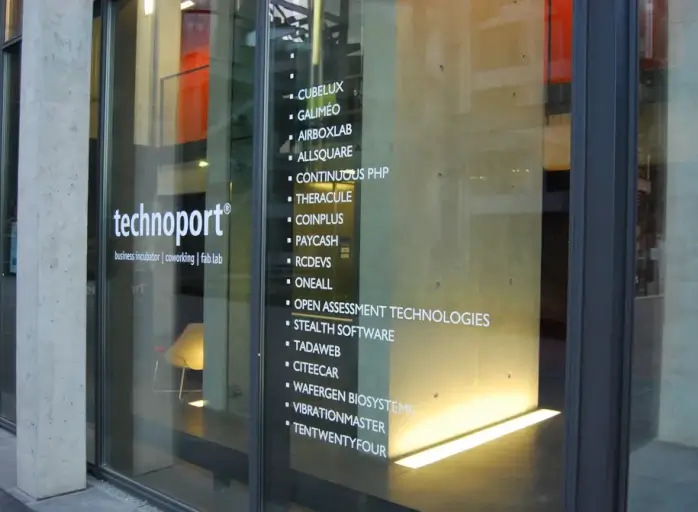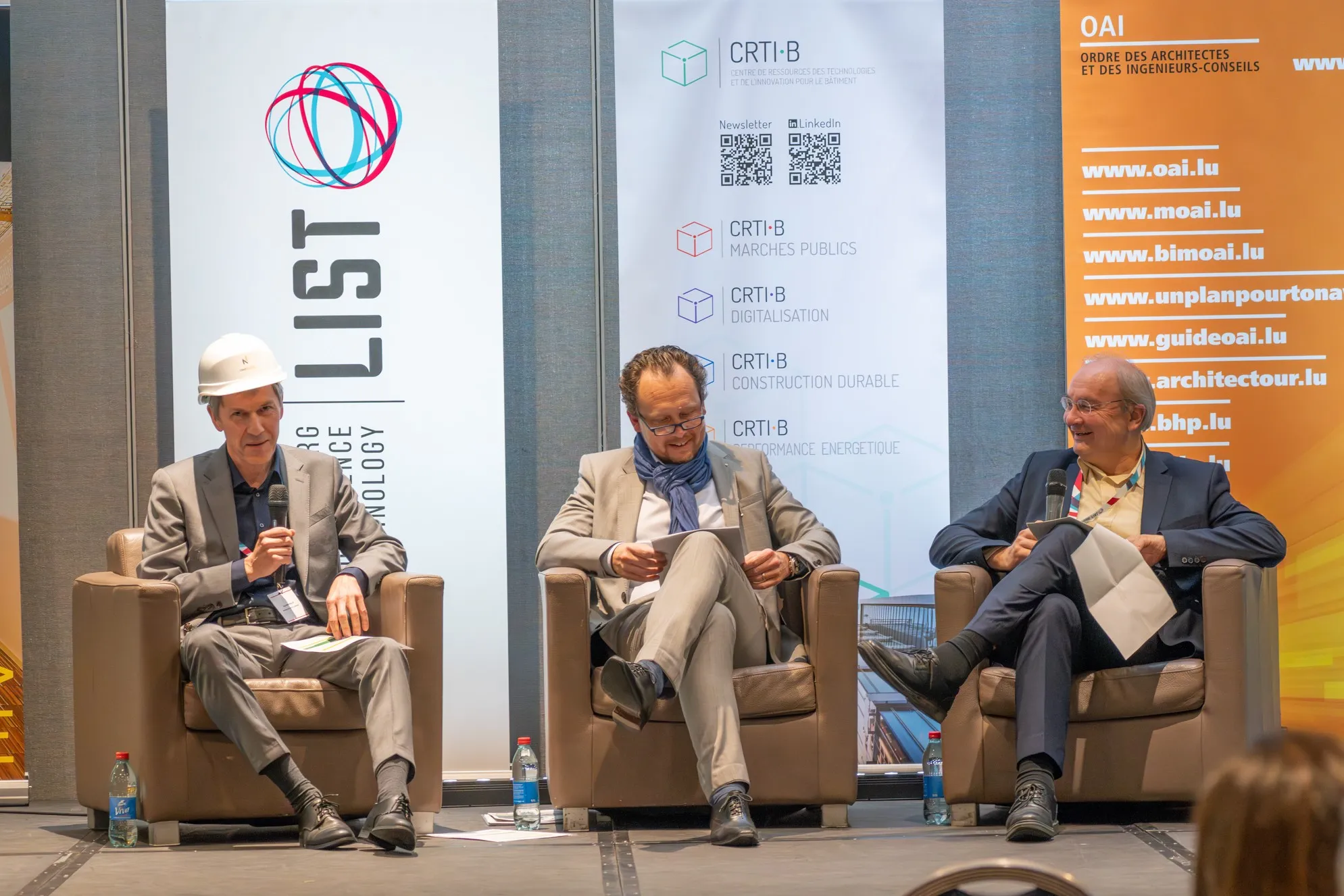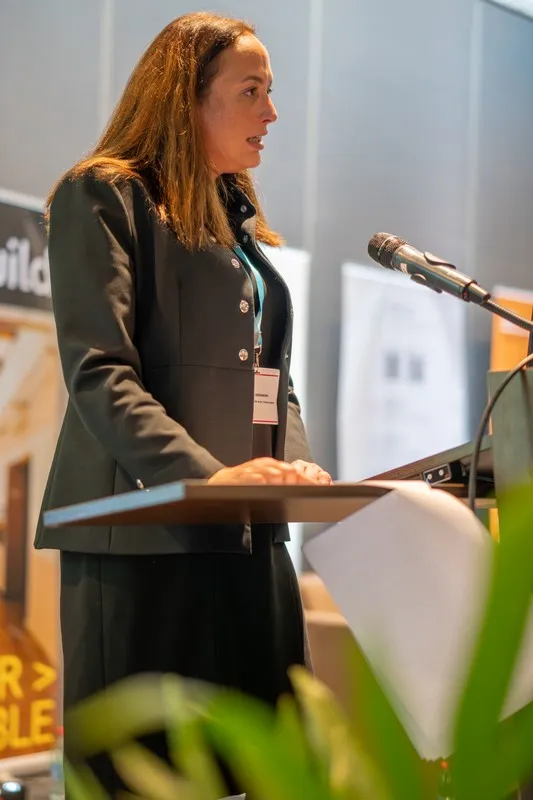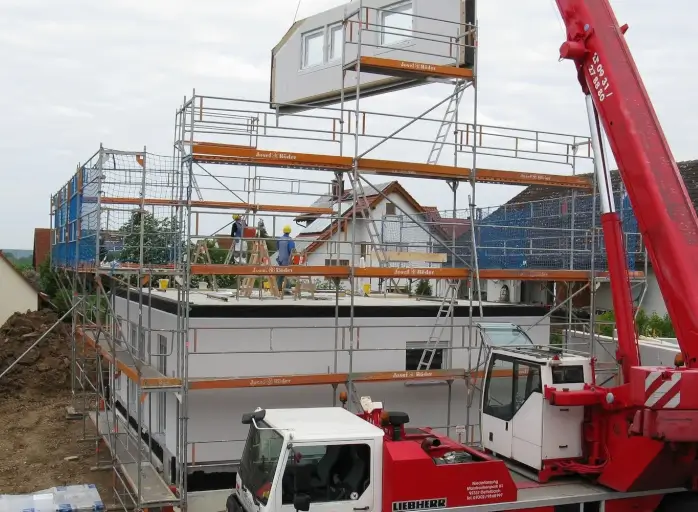

Seven commitments for the construction sector
The Ministry of Mobility and Public Works is determined to drive administrative simplification for the benefit of all stakeholders.
 Jean-Michel Gaudron
Jean-Michel Gaudron
From now on, Luxembourg’s key event in the construction sector will no longer be called "BIMLUX & Sustainable Building for Resilient Cities" but "BIM & Bau". This new name reflects the merger of two previously separate initiatives into a single, unified platform.
The 2025 edition of the event highlighted the dynamic forces shaping the sector. "These two days demonstrated that research provides insights, industry takes action and institutions offer guidance and support. This underscores the importance — and even the necessity — of a regular opportunity to meet, exchange ideas and align priorities without losing momentum," explains Thierry Hirtz, Chair of the Resource Centre for Building Technologies and Innovation (CRTI-B).
While the 2025 merger marked a significant milestone, it is just the beginning. "We aim to continue this approach with an annual rhythm: one year, a focused and impactful one-day event; the next year, a two-day edition to delve deeper, test ideas and make decisions. This cycle allows us to experiment and then build on our progress," says Lucien Hoffmann, Scientific Director of the Luxembourg Institute of Science and Technology (LIST).
 A clear vision
A clear vision
The new name, "BIM & Bau", was chosen deliberately to resonate with both digital specialists and the wider construction sector. "It’s a name that bridges data and the worksite, the model and the hammer," says Paul Schosseler, Chairman of the Board of Directors of Neobuild GIE. The term ‘Bau’ - which means ‘construction in Luxembourgish - encompasses all aspects of the construction process: design, execution, operation, resilience, sustainability, materials, energy, water and usage.
"BIM represents the well-organised mind, while Bau symbolises the hands that build. Together, they embody a sector moving in unison," Dr Schosseler adds. This sense of solidarity and community is echoed by the Ministry of Mobility and Public Works, which emphasises the need for administrative simplification. "Our sector urgently needs simple and effective rules, clear standards and shared discipline — not to stifle creativity, but to unlock the intelligence behind projects and ensure high-quality execution," says Sylvie Siebenborn, Director of the Ministry's General Directorate for Public Buildings and Urbanisation.
 The strength of collaboration
The strength of collaboration
Ms Siebenborn also highlights the collective effort driving progress in the sector. Key players include CRTI-B, which organises practices and produces guides, clauses and standards; LIST, which provides research and evidence through testing; Neobuild and its training partners who test, demonstrate and disseminate knowledge; Luxinnovation, which connects and supports the ecosystem; and professional organisations such as the OAI, the Chamber of Skilled Trades and Crafts, the Federation of Craftsmen and the group of entrepreneurs who translate professional needs into actionable requirements.
"This collaboration is what makes Luxembourg’s construction sector credible, competitive and proud of its expertise," Ms Siebenborn notes.
She emphasises that this momentum must be supported by a strong, predictable, and transparent public sector. "When the public sector operates with clear rules, the private sector adopts, improves and scales them. This is the natural flow of the market," she explains. However, she acknowledges the need to accelerate progress in areas where inefficiencies persist, particularly in administrative procedures. "The digital building permit is a game-changer — if we take it seriously. To make it work, we need a centralised, interoperable one-stop portal."
"The desire to keep it simple"
To support this vision, the Ministry has proposed a concrete framework for the future, built around seven simple commitments to better support construction projects:
- written objectives from the programming and implementation of regulatory frameworks within government and professional commissions;
- a BIM container, federating a wide range of information, where the requirements are adapted to each milestone;
- traceability of materials;
- a life cycle analysis at the right time;
- resource management at the heart of the design;
- a systematic link between territory and building;
- an open innovation capacity.
When the State and the municipalities move in the same step, the sector finds its rhythm and confidence is established. Sylvie Siebenborn, Ministry of Mobility and Public Works
"These commitments do not require endless reforms. They require clarity, consistency and the desire to keep things simple. They also require greater coordination between ministries, and an initial alignment between all public project owners," indicates Ms Siebenborn. “When the State and the municipalities move in the same step, the sector finds its rhythm and confidence is established.”
Luxinnovation, the facilitator
As the national innovation agency, Luxinnovation supports construction sector organisations in their transition towards more innovation by offering various forms of assistance. With guidance from certified experts through programmes such as Fit 4 Sustainability, Fit 4 Digital, Fit 4 Innovation and Fit 4 AI, companies have the opportunity to assess their level of maturity and receive personalised support.
Luxinnovation also acts as an ecosystem facilitator, while fulfilling one of its main missions: assisting companies in submitting projects and preparing applications that enable them to access national or European funding.







